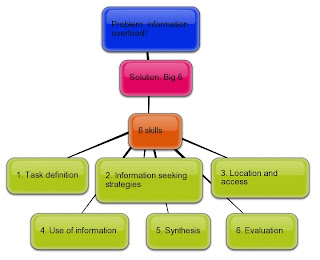
About Me

- Sarah
- Hi, I am in my 2nd year studying to be a teacher through CQUni. This blog was designed to help me reflect on my findings about ICT tools for my and my future students' learning.
Tuesday, August 10, 2010
Learning design frameworks
I've just been reading and learning about various learning frameworks. I am very familiar with the Dimensions of Learning - however I have had no experience with frameworks such as the 'Engagement Theory', 'Big 6' and 'TPACK'. All have similarities and differences. I personally find it easy to understand the 'Big 6' theory - however I struggle to see it being used other than a research process.
I like how the 'Engagement Theory' has students moving beyond themselves and creating projects for "outsiders". School needs to offer students with authentic experiences - and this theory utilises that.

Subscribe to:
Post Comments (Atom)
Hi Sarah,
ReplyDeleteAfter reading your post, I was feeling similar so I decided to go back and look at the Venn diagram we completed in the lectures and to complete more research.
On the Venn diagram, my group discussed the following:
Big 6
- More approach based
- More step by step instructional
- Good for wiki
- Life skills/ transferable skills
- Intrinsic/subconscious
- Simple Terms
Engagement Theory
- More theory
- Focus on collaboration
- Good for blog
- Scaffolded
- Community based
- Engagement
Both have/are:
- Problem Solving
- Decision Making
- Both link well to Dimensions of Learning
- Authentic
- Real Life
- Students meaningfully engaged
- Encourage ICT
- A tool to work with and around
- Focus on teacher oriented learning.
I think that the Big 6 Skills is a good framework to apply when encouraging students to solve problems, giving them a process that assists them in effectively solving the problem. As stated by Eisenberg and Berkowitz (2001) it “helps students develop the skills and understandings they need to find, process and use information effectively.” In this 21st century, where there is information readily available everywhere I think this is an important set of skills for students to have.
With regards, to the engagement theory I find that with the principles being based on collaborative, project-based, and authentic tasks, this framework fits well with ICT learning (Kearsley & Shneiderman, 1999). I think that it fits well because ICT tasks can sometimes be really difficult however with students being encouraged to collaboratively complete the tasks there is a level of peer tutoring and support being encouraged. I think with ICT tasks now being relevant and their being a ready availability of real life material and learning, the promotion of this theory would benefit the learners.
With positives of both frameworks I am unsure as to which I would promote and use in my class, I guess it would be a matter of trialling both to see what benefits all learners the most.
Thanks Sarah, for the insight and encouragement to go back and look at these learning frameworks.
Kelly
Thanks for that insightful comment. After reading this and doing some more research, I am in favour of using the Engagement theory to develop tasks and units. I do like the simple steps involved in the Big6 framework, however my mind does not link it to learning outside an investigation. I particularly like the “donate” phase of the engagement theory. Creating a product for uses other than just for individual purposes, shows the importance of giving and contributing to society. Students should to be involved with groups (being other grades, schools, groups in the community, state, country or overseas) to be develop acceptance of diversity and a value of selflessness.
ReplyDelete